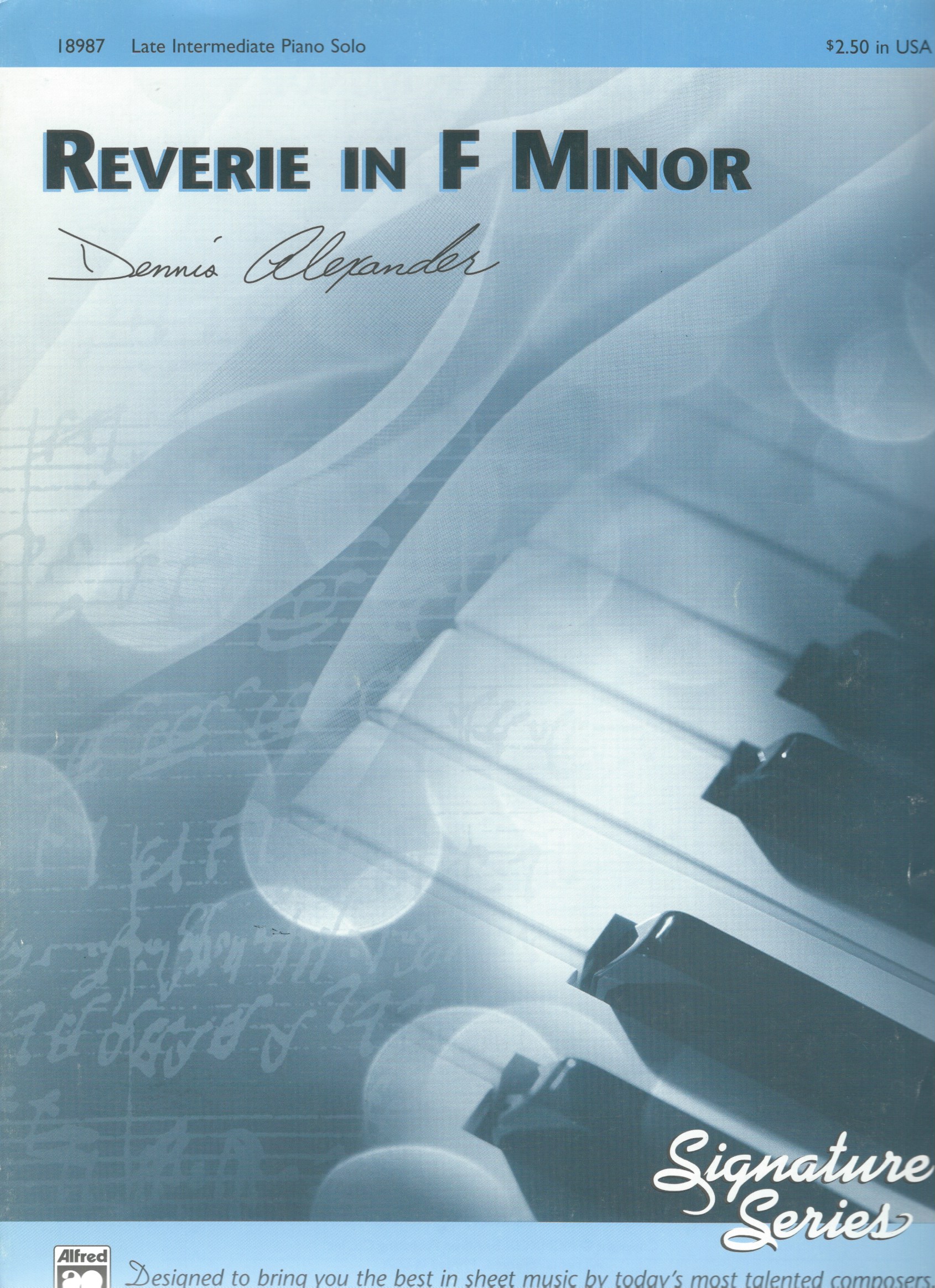Teaching "Reverie in F minor" - (Late Intermediate Sheet Solo)

'Reverie in f minor' is a hauntingly beautiful piece with a hint of mystery throughout. It was actually written in November of 1998 as a 'thank-you' note to my teacher friends in Puyallup, Washington for their interest in starting a 'Joy of Music' award in memory of my 23-yr. old son, Darren Alexander who passed away very unexpectedly in June of that year. I am happy to report that the award is still being given every year to an outstanding student from their chapter!

(Click on music pages to enlarge)
This is a piece that demands a beautiful sense of legato, as well as a good control of 2 against 3 rhythms. The opening 2 measure motif, which move from the f-minor arpeggiated accompaniment pattern to the Neapolitan 6th (on Gb), repeats numerous times throughout the piece and contributes to the mysterious, empyrean quality of this work. In ms. 4, take care to voice the alto very carefully so that the sustained dotted half-note melody line sings through the measure, and then 'match tones' on beat 7 in order to avoid any accent on the Bb. This pattern repeats several times throughout the piece, (ms. 5, 23, 24, 27, 28) so careful voicing is required in order to maintain the beautiful, singing legato line in the soprano. In ms. 11, the sudden shift to an F-major tonality lends a more optimistic quality to the character, and this rising figure (ms. 11-14) is rather symbolic of the human spirit rising to the heavens, with each repetition starting delicately and then increasing in volume-- then 'forte' in ms. 13 and finally culminating in a glorious 'ff' in ms. 15 on that rich, Db major sonority.

Be sure to give the LH Db octave full tone with lots of upper-body weight, as this is really the climax of the entire piece and needs to be very convincing and powerful.
A return to the more introspective mood follows this climax in ms. 15, so take care to follow the diminuendo marking down to 'mp' in ms. 17. In ms. 18, please take some time just before the leap up to the group of four 16th-notes, and play those 16th notes with a loving, caressing touch very expressively, followed in turn by the 'poco ritardando' in ms. 19.
Ms. 20 brings back the original theme, though this time the LH notes are harmonized with moving 8ths in the RH, and once again leading up into the Neapolitan 6th chord at the end of ms. 20 and 21.

Maintain the same type of mood that existed in the opening of this piece, but at ms. 26, take a little time with that big leap of the 7th and play with a bit more tone and conviction (which sets this moment apart from ms. 7, which only had the leap of a 5th). In bringing this very expressive piece to a close, be sure to begin the expansive rolled chord (ms. 33) ON the beat and make the roll both expressive and expansive, with the top note of the rolled chord receiving the deepest tone quality. Also, please follow the pedal marking exactly so that the harmonic colors are properly executed. Take a little extra time on that low F in the LH beginning ms. 36, and then gradually relax the tempo throughout those final two bars-- use a very supported wrist and arm in order to create the control needed to play that last chord 'pp'. Allow the sound to completely dissipate before releasing the hands and pedal. Performers can hear Mr. Alexander's performance of this piece on his personal website: www.DennisAlexander.com (click on the 'compositions' link, and scroll to 'Late Intermediate Solo Sheets').
This composition is also included in the new "Celebration Series" (2015 edition) in the Repertoire 9 book.
